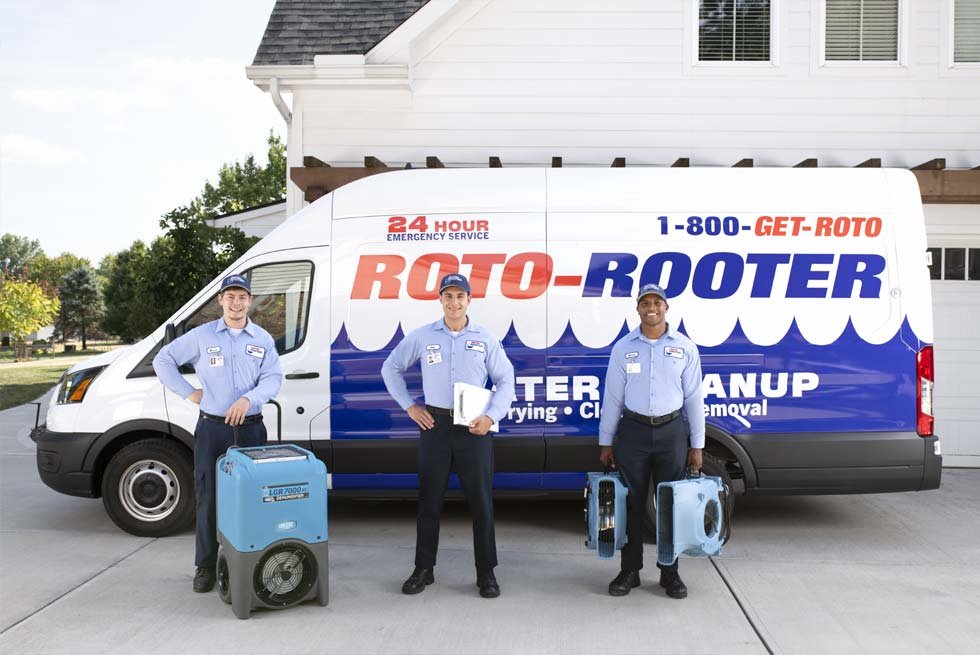When it doesn’t rain but pours, Roto-Rooter’s Water Removal and Cleanup Services come to the rescue.
Accidents happen, and when they happen to be wet ones, the fallout can be extensive. Good thing you’ve got us on your team. We’ll outline here a few practical things to do in the case of a water-related incident and why we should be on your speed dial list. So pack away your wet-dry vac (not going to be helpful here unless you’re looking for a reason to buy a new one) and find a comfy seat.
What to do
Firstly, and most importantly, take a second to figure out exactly what the cause of the water leakage or flooding is. This may be obvious, such as in the event of an enormous storm, but can sometimes be less clear in the case of a burst pipe or a faulty appliance. In the case of a plumbing-related accident, follow these steps:
1. Turn off the main water.
A small step can help prevent further damage enormously. It may be temporarily inconvenient to deal with no water in other areas of the home, but it’s just for a short time. One of our technicians may be able to turn off the water more locally so as to allow water to flow through the rest of your premises.
2. Turn off the electricity.
There’s really no explanation needed here. Water and electricity. The best frenemies. Don’t get involved. If you can’t locate the electric mains, it may be best to wait for a Roto-Rooter technician to make sure the site is safe.
3. Remove valuables from the affected area.
Again, assess the situation before trying to drag TV’s off the wall. If it’s safe to do so, it’s a good idea to relocate valuables (especially small ones) and remove items that haven’t been affected yet.
We clean up Pretty Good
So, it’s no surprise to learn that we’re pretty good with water—whether it’s good, bad, or ugly, we have the equipment, the training, and the footwear needed to make the best of the situation. In the case of a callout, here’s a basic idea of what to expect:
1. Inspection: We start off by assessing the cause and extent of the damage. Our technicians then get to work, sealing off the affected area and making sure that safety is restored.
2. Heavy-duty pumps: In very saturated instances, we’ll bring out the big guns first. These portable pumps are very powerful and designed to remove large volumes of water quickly, disposing of it in the nearest safe drainage location.
3. Powerful Wet Vacuums: Not your run-of-the-mill hoovers. These guys have supersized capacity and performance, able to effectively remove water from carpets, floors, and upholster.
4. Dehumidifiers and Fans: The next part of the process is extracting as much moisture from the air and fixtures as possible. It’s very important to avoid a damp atmosphere, as this can easily encourage mold and pathogens to spread.
5. Hygienic Sanitizing: Flood water or sodden furniture can easily carry contaminants, so our last step is to make sure that the affected areas are thoroughly clean, sanitized, and feeling fresh.


Surfing Through All Summertime Emergencies
We’d like to leave you with this last note: we are here all summer! Others may be closed for vacation or at the beach soaking up the rays, but not us. No matter when you need us, we can be there with our souped-up Roto-Rooter vans (they’re like portable bat caves for plumbers) within the day.
Emergencies don’t give advance warning, and we make sure we’re ready for them.
Hopefully this summer sees you accident-free, but if you find yourself in a watery crisis, you know who to call!
